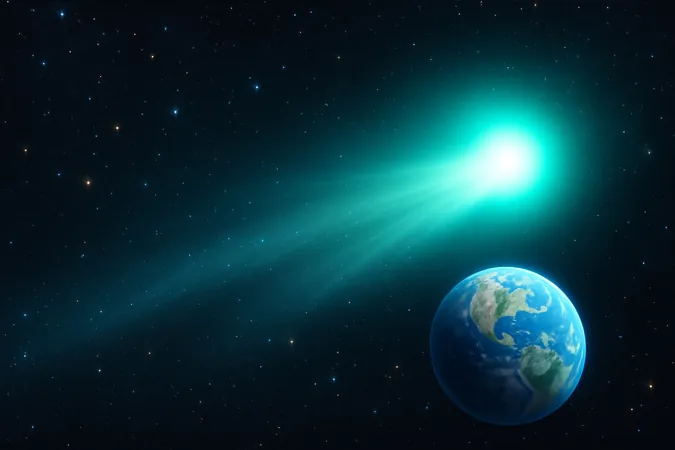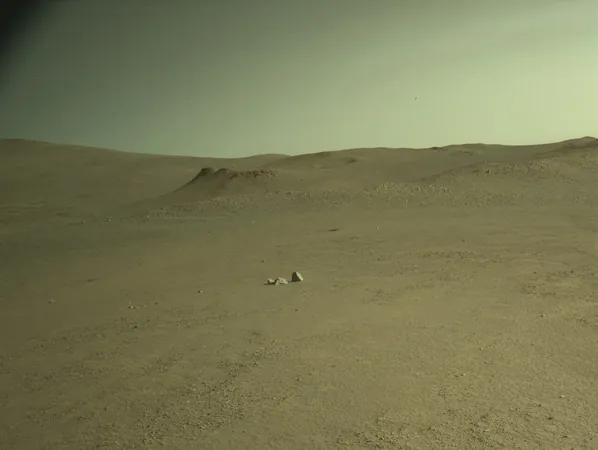
Interstellar Mystery: Is 3I/ATLAS a Cosmic Comet or Alien Tech?
2025-08-20
Author: Michael
An Enigmatic Visitor from Beyond the Solar System
Astronomers have identified only a handful of objects believed to have originated from outside our solar system, and the newest addition, dubbed 3I/ATLAS, is already stirring up intrigue and speculation. Discovered just this summer, its peculiar behavior challenges our understanding of what an interstellar traveler should look like.
What Sets 3I/ATLAS Apart?
NASA's Hubble Space Telescope captured a stunning image of 3I/ATLAS on July 21, 2025, revealing a glowing haze known as a coma that precedes the object as it approaches the Sun—typical behavior for a comet. However, unlike ordinary comets, 3I/ATLAS lacks a bright tail, instead radiating light in a focused beam in front of it, igniting debates among scientists.
Bright Light with a Mysterious Source
Harvard astrophysicist Avi Loeb has raised eyebrows with his bold theories, arguing that the brightness of 3I/ATLAS cannot be solely attributed to reflected sunlight off of dust. He estimates that its glow would require an unprecedented power output of around 10 gigawatts—similar to what a large power plant generates. This has led to daring possibilities, such as the object emitting light on its own.
Extraterrestrial Technology or Cosmic Piece?
Loeb's theories dive deep into the extraordinary. He speculates that it could be a fragmented core from a supernova or even a spacecraft fueled by nuclear energy, shedding cosmic dust during its voyage across the galaxy. "This cannot be ruled out," Loeb notes, though he acknowledges that more evidence is required to substantiate such claims.
A Captivating Journey Through Our Solar System
3I/ATLAS’s trajectory has also been anything but ordinary, making close passes near both Earth and Jupiter. This fall, on October 3, it’s set to glide just 29 million kilometers from Mars—an exciting opportunity for observation. NASA's Mars Reconnaissance Orbiter, equipped with powerful imaging technology, plans to capture data about this enigmatic object during its approach.
The Scientific Community Divided
While many astronomers remain skeptical, deeming 3I/ATLAS as simply an unorthodox comet, some, like David Jewitt, argue that the absence of a tail could be explained by rapid sublimation of ice particles on its surface. Nonetheless, concerns linger about its light profile, which suggests a luminous core rather than typical sunlight reflection.
The Countdown to Discovery
As we await the October flyby, the scientific community is buzzing with theories and questions. Whether 3I/ATLAS is a comet, a radioactive fragment, or even a communication device from an advanced civilization remains to be seen, but it has already sparked vigorous discussions about the depths of the universe.
Implications for Astronomy and Beyond
The implications of this discovery could be monumental. If 3I/ATLAS truly produces its own light, it could alter our understanding of interstellar objects and suggest that radioactive debris could be drifting between stars. Should it turn out to be technology from an advanced civilization, it would challenge our perceptions of life in the universe.
Loeb's unwavering curiosity underscores the excitement surrounding such discoveries, as they prompt us to re-evaluate our knowledge and explore the uncharted territories beyond our solar system.









 Brasil (PT)
Brasil (PT)
 Canada (EN)
Canada (EN)
 Chile (ES)
Chile (ES)
 Česko (CS)
Česko (CS)
 대한민국 (KO)
대한민국 (KO)
 España (ES)
España (ES)
 France (FR)
France (FR)
 Hong Kong (EN)
Hong Kong (EN)
 Italia (IT)
Italia (IT)
 日本 (JA)
日本 (JA)
 Magyarország (HU)
Magyarország (HU)
 Norge (NO)
Norge (NO)
 Polska (PL)
Polska (PL)
 Schweiz (DE)
Schweiz (DE)
 Singapore (EN)
Singapore (EN)
 Sverige (SV)
Sverige (SV)
 Suomi (FI)
Suomi (FI)
 Türkiye (TR)
Türkiye (TR)
 الإمارات العربية المتحدة (AR)
الإمارات العربية المتحدة (AR)